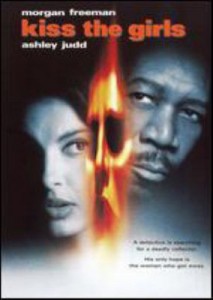 James Patterson’s Alex Cross series was perfectly timed for moviegoers of the nineties who were primed for psychological thrillers after a number of popular hits. Reviewers drew comparisons between Kiss the Girls and other releases like Silence of the Lambs and Se7en. However, the comparisons between the films were not entirely favorable. Kiss the Girls starred Morgan Freeman and Ashley Judd, whose career was just beginning to accelerate.
James Patterson’s Alex Cross series was perfectly timed for moviegoers of the nineties who were primed for psychological thrillers after a number of popular hits. Reviewers drew comparisons between Kiss the Girls and other releases like Silence of the Lambs and Se7en. However, the comparisons between the films were not entirely favorable. Kiss the Girls starred Morgan Freeman and Ashley Judd, whose career was just beginning to accelerate.
The novel follows forensic psychologist Alex Cross as he learns that his niece Naomi, a law student at Duke, was kidnapped by a lascivious serial killer who masquerades under the pseudonym, Casanova. Cross abandons DC for Durham. His emotions are high and he is focused on finding Naomi before it’s too late. Meanwhile, medical intern Kate McTiernan is Casanova’s latest victim, but not for long. McTiernan manages to escape, which makes her the anomalous sole survivor. She and Cross team up to uncover Casanova’s true identity and rescue the other victims still languishing in Casanova’s “harem.”
Kiss the Girls is Patterson’s only novel that features a North Carolina setting. But Patterson layered plenty of authenticating detail in his book to evoke the Raleigh-Durham-Chapel Hill area. Filming locations for the movie adaptation were largely limited to Durham, and of course, Los Angeles. The University of North Carolina at Chapel Hill did not to approve the film’s request to use the university’s campus during shooting.
In the past, the University has a mixed record of accepting some requests to film on campus, but rejecting others. According to a Daily Tarheel article from 2001, UNC’s major ruling factor is maintaining the University’s image. The University also considers how the project might provide opportunities or disruptions to campus life. Ultimately, the University decided against Kiss the Girls due to its graphic content. Chapel Hill officials did not consent to give the producers permission to shut down Franklin Street for filming.
Although Kiss the Girls is second in the Cross series it was adapted first. Along Came a Spider, the first novel in the series, was a follow-up in 2001. While Kiss the Girls performed well at the box office, critics panned the film for pacing issues and a lack of uniqueness. Both Freeman and Judd were commended for their performances however. In 2012, Tyler Perry starred in an Alex Cross reboot. There are plans for a sequel reportedly.
The movie version is a bit more solemn than the novel. In the book, Kate’s introductory remarks are self-deprecating and elicit a few smiles. More or less, the monologues match up. But both versions represent Kate as a strong and intelligent character, in spite of her ordeal.
Patterson’s novel is available through the UNC-Chapel Hill Library catalog. There are copies at Davis Library and Wilson Library. The film adaptation is available through the UNC-Chapel Hill Library catalog as well. Copies can be found at the Media Resources Center in the Undergraduate Library and Wilson Library. The original blog post for the novel is here.
Sources consulted here: The Baltimore Sun, The Daily Tarheel (two different articles), Film Journal International, IMDb, Movie Clips, The New York Times, The San Francisco Chronicle, Roger Ebert, The Washington Post (two different reviews), Wikipedia

